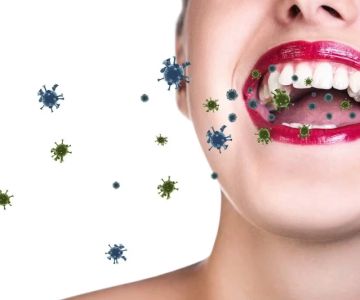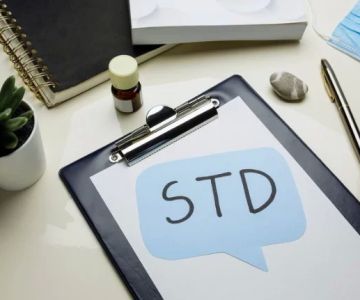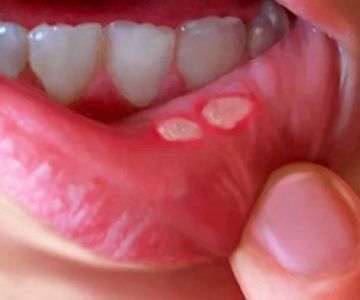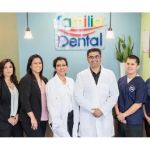
Understanding Sexually Transmitted Diseases Transmitted Orally
When it comes to sexually transmitted diseases (STDs), most people are aware of the risks associated with unprotected vaginal or anal sex. However, many people are unaware that STDs can also be transmitted orally. Oral sex, whether it's giving or receiving, can expose individuals to a variety of infections that can affect the mouth, throat, and even other areas of the body. In this article, we will explore which sexually transmitted diseases can be transmitted orally, how they spread, and what precautions can help minimize the risks.
1. The Risks of Oral Transmission of STDs
Oral sex involves the exchange of bodily fluids, which can be a pathway for various sexually transmitted infections (STIs). While oral sex is often perceived as a safer alternative to vaginal or anal intercourse, it does not eliminate the risk of infection. The mouth, throat, and genitals are rich in mucous membranes, which makes them susceptible to infection from bacteria, viruses, and other pathogens.
1.1 How STDs Are Transmitted Orally
STDs are typically transmitted through the exchange of bodily fluids such as semen, vaginal fluids, blood, and saliva. During oral sex, an infected person can pass these fluids to their partner through the mouth or throat. Even if there are no visible symptoms, such as sores or rashes, someone can still transmit the infection to others. Moreover, certain STDs, such as herpes, can be transmitted even when the infected individual does not have an active outbreak.
2. Sexually Transmitted Diseases That Can Be Spread Through Oral Sex
There are several sexually transmitted diseases that can be transmitted through oral sex, including bacterial, viral, and parasitic infections. Understanding the specific risks of each infection can help individuals take the necessary precautions to protect themselves and their partners.
2.1 Herpes Simplex Virus (HSV)
Herpes simplex virus (HSV) is one of the most common STDs transmitted through oral sex. There are two types of HSV: HSV-1 and HSV-2. While HSV-1 is commonly associated with oral infections (cold sores), it can also be transmitted to the genital area through oral-genital contact. HSV-2 is typically linked to genital infections but can also be passed to the mouth during oral sex. Individuals with an active outbreak of herpes are at a higher risk of transmitting the virus, but even those without symptoms can still spread the virus.
2.2 Gonorrhea
Gonorrhea is a bacterial infection that can affect the throat, causing a condition called "pharyngeal gonorrhea." This infection can be transmitted through oral sex with an infected partner. While symptoms may be mild or absent, individuals with oral gonorrhea can experience sore throats, difficulty swallowing, or swollen lymph nodes. If left untreated, gonorrhea can lead to complications such as infertility and an increased risk of contracting HIV.
2.3 Chlamydia
Similar to gonorrhea, chlamydia is another bacterial infection that can be passed through oral sex. Chlamydia can infect the throat, leading to symptoms such as a sore throat or difficulty swallowing. However, many people with chlamydia in the throat may not experience any noticeable symptoms, making it important for individuals to get tested regularly if they are sexually active.
2.4 Syphilis
Syphilis is a bacterial infection that can cause sores in the mouth or genital area. These sores, known as chancres, can be passed through oral sex. The infection can progress through stages, and if left untreated, syphilis can cause severe health complications, including damage to organs and nervous system involvement. Regular screening and early treatment are essential to prevent long-term damage from syphilis.
2.5 Human Papillomavirus (HPV)
Human papillomavirus (HPV) is one of the most common sexually transmitted viruses. Certain strains of HPV can cause genital warts and are linked to cervical cancer, while other strains can cause oral cancers, particularly in the throat. Oral sex with an infected person can transmit HPV to the mouth or throat. While there is no cure for HPV, vaccines are available that can protect against certain strains of the virus.
2.6 Hepatitis A, B, and C
Hepatitis is a viral infection that affects the liver, and while the primary mode of transmission for hepatitis is through blood and bodily fluids, it is also possible to contract hepatitis A, B, and C through oral sex. Hepatitis A can be contracted through oral-anal contact, while hepatitis B and C can be transmitted through blood exposure during oral sex with an infected person. Vaccination is available for hepatitis A and B, but there is no vaccine for hepatitis C.
2.7 HIV
Human Immunodeficiency Virus (HIV) is primarily transmitted through blood, semen, vaginal fluids, and breast milk, but it is also possible to transmit HIV through oral sex. The risk of transmission through oral sex is lower compared to vaginal or anal sex, but it is still possible, especially if there are cuts, sores, or bleeding gums in the mouth or throat. Using barriers like condoms or dental dams can significantly reduce the risk of HIV transmission during oral sex.
3. Prevention of Sexually Transmitted Diseases During Oral Sex
While the risk of contracting an STD through oral sex is real, there are several effective ways to reduce the chances of transmission. By taking simple precautions, individuals can protect themselves and their partners from the risks of oral STDs.
3.1 Use Protection: Condoms and Dental Dams
One of the most effective ways to reduce the risk of transmitting STDs during oral sex is by using protection. For oral-genital contact, condoms can be used during oral sex on a man, while dental dams (a thin sheet of latex or polyurethane) can be used for oral sex on a woman. These barriers prevent direct contact with bodily fluids, reducing the chances of STD transmission.
3.2 Get Tested Regularly
Regular STD testing is essential for sexually active individuals, especially those with multiple partners. Testing can help identify infections early, even if there are no symptoms present. Many STDs, including gonorrhea, chlamydia, and syphilis, can be easily treated with antibiotics, but early detection is key to preventing complications and further transmission.
3.3 Avoiding Oral Sex During Active Outbreaks
If either partner has an active outbreak of a sexually transmitted disease, it is essential to avoid oral sex until the infection is fully treated or healed. This is particularly important for infections like herpes and syphilis, which can be easily spread when sores or blisters are present.
3.4 Limit the Number of Sexual Partners
Having fewer sexual partners can reduce the overall risk of contracting an STD. By maintaining a monogamous relationship with a partner who has been tested for STDs, individuals can lower their chances of infection. If having multiple partners, practicing safe sex with every partner is essential for minimizing risk.
4. Real-Life Impact: A Story of STD Transmission
Consider the story of Emily, a 28-year-old woman who engaged in unprotected oral sex with a new partner. Despite being in a monogamous relationship for years, she later discovered that she had contracted gonorrhea in her throat. Emily had no symptoms and did not realize she was at risk. After seeking medical treatment, Emily learned the importance of using protection and getting regular STD tests. Her story highlights the need for awareness and protection when engaging in oral sex.
To learn more about how to protect yourself and your partner from STDs, visit Dentistry Toothtruth for expert guidance and the best recommendations on oral health and sexual health safety.







 Westgate Dental Arts3.0 (2 review)
Westgate Dental Arts3.0 (2 review) Coventry Family Dental4.0 (247 review)
Coventry Family Dental4.0 (247 review) Familia Dental3.0 (1028 review)
Familia Dental3.0 (1028 review) Dr. Daniel S. Fife, DDS4.0 (31 review)
Dr. Daniel S. Fife, DDS4.0 (31 review) Dentistry At Suburban Square: Michael I. Wollock, DMD4.0 (1228 review)
Dentistry At Suburban Square: Michael I. Wollock, DMD4.0 (1228 review) Comfort Care Dental4.0 (1156 review)
Comfort Care Dental4.0 (1156 review) The Importance of Oral Health Education During Pregnancy for a Healthy Pregnancy
The Importance of Oral Health Education During Pregnancy for a Healthy Pregnancy Why Skipping Dental Checkups Can Lead to Bigger Oral Health Problems
Why Skipping Dental Checkups Can Lead to Bigger Oral Health Problems Best Tips for Brushing Your Teeth Properly for Healthy Gums: Essential Techniques for Oral Health
Best Tips for Brushing Your Teeth Properly for Healthy Gums: Essential Techniques for Oral Health Advantages of Porcelain Dental Restorations
Advantages of Porcelain Dental Restorations How Can Diabetes Cause Tooth and Gum Problems? Preventing and Managing Oral Health Issues
How Can Diabetes Cause Tooth and Gum Problems? Preventing and Managing Oral Health Issues Healthy Habits for Promoting Good Oral Health and Hygiene: Tips for a Healthy Smile
Healthy Habits for Promoting Good Oral Health and Hygiene: Tips for a Healthy Smile